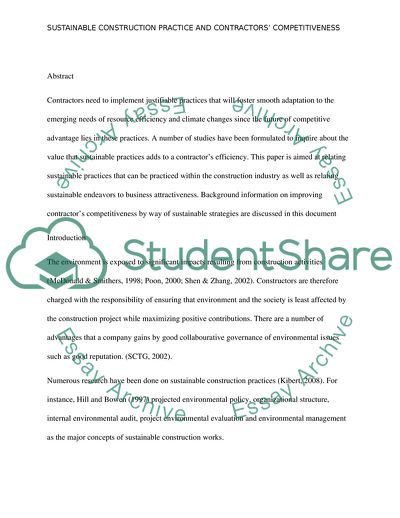Cite this document
(Sustainable Construction Practice and Contractors Competitiveness Report Example | Topics and Well Written Essays - 2000 words, n.d.)
Sustainable Construction Practice and Contractors Competitiveness Report Example | Topics and Well Written Essays - 2000 words. https://studentshare.org/engineering-and-construction/1804404-sustainable-construction-practice
Sustainable Construction Practice and Contractors Competitiveness Report Example | Topics and Well Written Essays - 2000 words. https://studentshare.org/engineering-and-construction/1804404-sustainable-construction-practice
(Sustainable Construction Practice and Contractors Competitiveness Report Example | Topics and Well Written Essays - 2000 Words)
Sustainable Construction Practice and Contractors Competitiveness Report Example | Topics and Well Written Essays - 2000 Words. https://studentshare.org/engineering-and-construction/1804404-sustainable-construction-practice.
Sustainable Construction Practice and Contractors Competitiveness Report Example | Topics and Well Written Essays - 2000 Words. https://studentshare.org/engineering-and-construction/1804404-sustainable-construction-practice.
“Sustainable Construction Practice and Contractors Competitiveness Report Example | Topics and Well Written Essays - 2000 Words”. https://studentshare.org/engineering-and-construction/1804404-sustainable-construction-practice.


